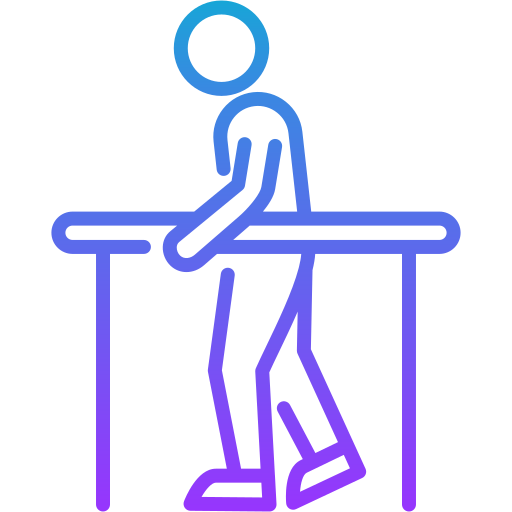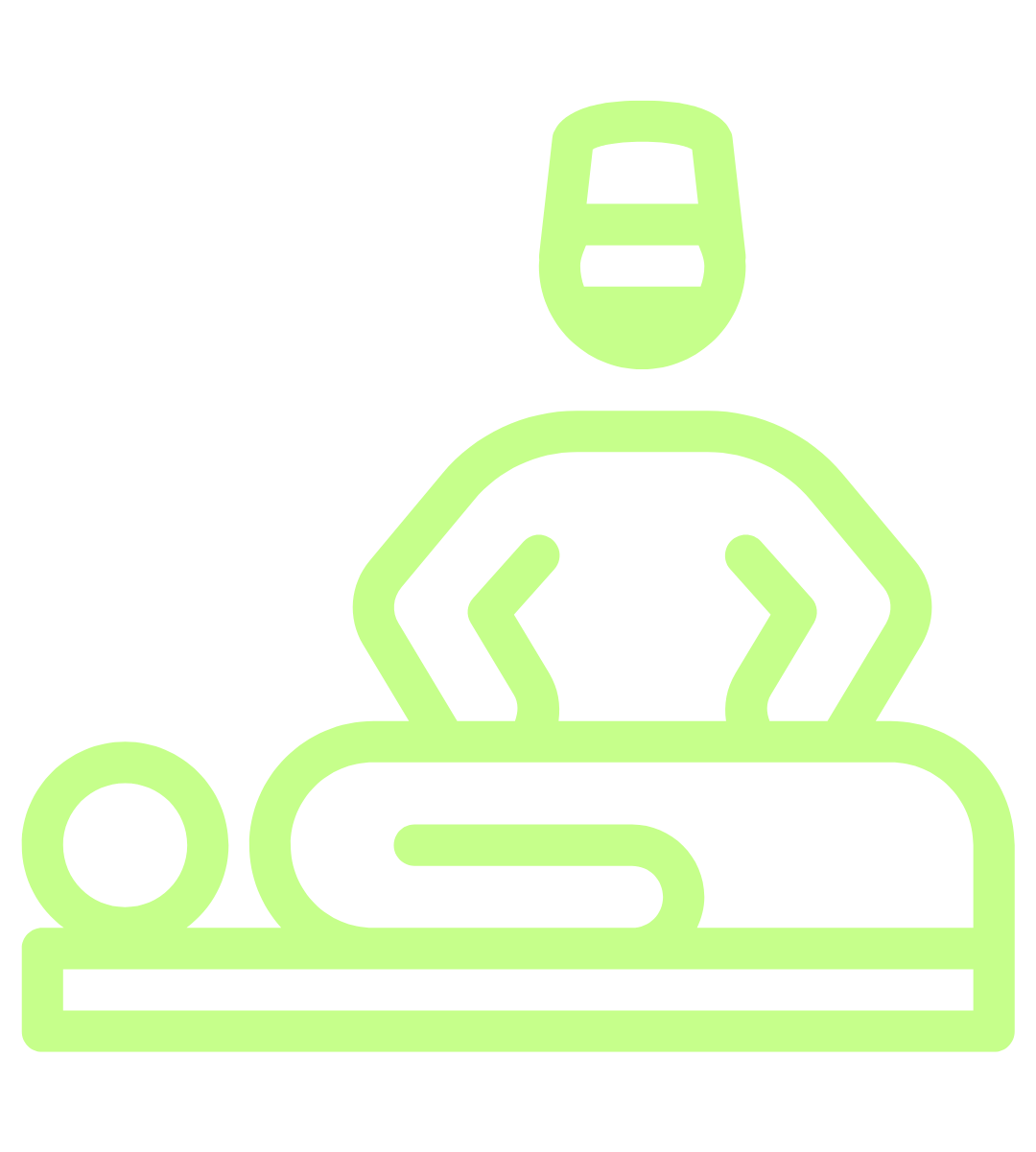
Fracture
A fracture is a partial or complete break in the bone. When a fracture occurs, it is classified into two types: open or closed:
- Open Fracture (Compound Fracture): The bone breaks and protrudes through the skin, or a deep wound exposes the bone externally.
- Closed Fracture (Simple Fracture): The bone breaks, but the skin remains intact.
Fractures can take on different forms, and here are the most common types:
- Greenstick Fracture: This is an incomplete break where part of the bone breaks while the other side bends, often seen in children due to their softer bones.
- Transverse Fracture: The bone breaks in a straight line across.
- Spiral Fracture: The bone breaks in a spiral pattern, usually as a result of a twisting injury.
- Oblique Fracture: The break occurs diagonally across the bone.
- Compression Fracture: The bone is crushed, often resulting in a wider or flatter appearance of the fractured bone.
- Comminuted Fracture: The bone breaks into three or more pieces, with fragments at the site of the fracture.
- Segmental Fracture: The bone breaks in two separate places, leaving a “floating” piece of bone.
- Avulsion Fracture: The bone fractures near a tendon or ligament, often caused by a tendon or ligament pulling off a small piece of bone.
Know More
About Fracture
-
 Symptoms
Symptoms
-
 Diagnosis
Diagnosis
-
 How We Perform
How We Perform
-
 Why Is Treatment Needed?
Why Is Treatment Needed?
-
 Recovery
Recovery
-
 Rehabilitation
Rehabilitation
-
 Prevention
Prevention
- Severe pain at the site of the fracture, especially when the area is touched, moved, or put under pressure.
- Swelling around the injury site is common due to the body’s response to injury.
- A visible abnormal shape or angle in the affected body part (e.g., crooked or misaligned limbs).
- Difficulty moving the affected part of the body or an inability to move it at all.
- A grinding or crackling sensation or sound when the broken bone ends rub against each other.Numbness or a tingling feeling around the injured area could indicate nerve damage.
- Symptoms of shock can occur, such as cold, clammy skin, rapid breathing, weakness, dizziness, or fainting, especially in cases of open fractures with significant bleeding.
- Inspection of the injured area for signs of deformity, swelling, or bruising.
- Palpation (gentle pressing) of the injured area to locate areas of tenderness, deformities, or abnormal movement.
- Checking for any open fractures (bone sticking out of the skin).
- Assessment of the range of motion of the injured area (e.g., whether the joint or bone can be moved normally or not).
- Checking for neurological symptoms (numbness, tingling) or vascular symptoms (pulse, skin color) to assess if nerves or blood vessels are affected.
- Casting or Splinting: Non-displaced fractures may be treated with a cast or splint to keep the bone immobilized and allow it to heal naturally.
- Surgical Intervention: For displaced or complex fractures, surgery may be necessary to realign the bones and secure them with hardware (plates, screws, rods).
- Follow-up: Regular follow-up visits are important to monitor healing, adjust splints/casts, and ensure proper alignment.
Fractures can cause severe pain, especially if the broken bone is not immobilized properly. Treatment aims to manage and alleviate this pain, helping the patient remain comfortable and more easily undergo other aspects of care.Fractures can have a psychological impact, especially if the injury limits mobility or independence. Effective treatment provides not only physical recovery but also a sense of security and confidence in returning to normal life.
In order for a fracture to heal, the bones must be held in the correct position and protected. Soon after a fracture occurs, the body acts to protect the injured area, and forms a protective blood clot and callus around the fracture. New “threads” of bone cells start to grow on both sides of the fracture line.Most fractures heal in 6-8 weeks, but this varies tremendously from bone to bone and in each person based on many of the factors discussed above. Hand and wrist fractures often heal in 4-6 weeks whereas a tibia fracture may take 20 weeks or more.
General principles in the rehabilitation of a patient with an extremity fracture include: treat the patient, not the x-ray; move all joints not immobilized; prevent disuse atrophy; use gravity to assist in mobilizing a joint; stabilize proximal joints to avoid reverse action of biarticular muscles;
Overview. Rehabilitation is defined as “a set of interventions designed to optimize functioning and reduce disability in individuals with health conditions in interaction with their environment”.
- Consume enough calcium. Calcium is the building block of your bones. …
- Receive enough vitamin D. …
- Start lifting weights. …
- Try to prevent falls. …
- Stop smoking. …
- Limit your alcohol intake. …
- Speak with your doctor.

trauma surgery
Trauma surgery is a specialized branch of surgery focused on the treatment of injuries caused by external forces, such as accidents, falls, violence, and other traumatic events. It is an essential aspect of emergency medicine and critical care, as trauma surgeons often work in high-pressure environments, including emergency rooms (ERs) and trauma centers, where rapid decision-making is vital to saving lives and minimizing long-term damage.
Trauma surgery Process: Upon arrival at the trauma center or ER, the first priority is to stabilize the patient using the ABCDE approach:
- Airway: Ensuring the airway is clear and unobstructed.
- Breathing: Ensuring the patient is breathing properly.
- Circulation: Managing any issues with blood flow, including bleeding.
- Disability: Assessing neurological function.
- Exposure: Exposing the body to identify any hidden injuries.
Know More
About Trauma
-
 Diagnosis
Diagnosis
-
 How We Perform
How We Perform
-
 Why Is Treatment Needed?
Why Is Treatment Needed?
-
 Recovery
Recovery
-
 Rehabilitation
Rehabilitation
-
 Prevention
Prevention
- Inspection and palpation of the body to detect injuries such as bruising, deformities, tenderness, swelling, or open wounds.
- Assessment of pain, joint function, muscle strength, and neurological symptoms.
- Examination of the head, neck, chest, abdomen, pelvis, extremities, and spine for signs of injury.
- Focused Assessment: Based on the mechanism of injury, the provider may focus more on certain body regions (e.g., head trauma in a car accident or abdominal trauma after a blunt injury).
- Surgical Intervention: Depending on the type of trauma, surgery may be required to treat internal injuries (e.g., organ repair, stopping internal bleeding, repairing blood vessels).
- Fracture Fixation: If there are fractures, surgical fixation (e.g., plates, screws) may be needed to realign bones and stabilize fractures.
- Critical Care: For patients with severe trauma or multiple injuries, they may require ICU care with continuous monitoring of vital signs, oxygen levels, and fluid management.
Trauma often leads to internal or external bleeding. If uncontrolled, this bleeding can result in shock, organ failure, or death. Treatment includes techniques like direct pressure, tourniquets, and blood transfusions to control bleeding and stabilize circulation.Trauma patients often need to be immobilized (e.g., on a backboard or with a cervical collar) to prevent secondary injury while transporting them to a hospital.Trauma can cause deformities, disabilities, or chronic pain (e.g., from nerve damage, joint instability, or muscle injuries). Treatment like surgery, rehabilitation, and physical therapy aims to reduce the long-term consequences and restore normal function.
Relax – use relaxation techniques such as yoga, breathing or meditation, or do things you enjoy, such as listening to music or gardening. Express your feelings as they arise –talk to someone about your feelings or write them down. When the trauma brings up memories or feelings, try to confront them.
- Phase 1: Safety and Stability. Your care team will discuss with you what your ongoing needs will look like after you’re discharged. …
- Phase 2: Remembering and Grieving. …
- Phase 3: Restoring Relationships.
Depending on your injury, rehabilitation may help you regain movement and strength, relearn skills or learn new ones. It can also help you to recover mentally and emotionally from the trauma you have experienced. Rehabilitation may include: help for emotional and mental health difficulties.
Immobilization, range of motion (ROM), strength, and return to activity are the four stages of the rehabilitation process. Each phase is divided into three subcategories: modalities, exercises, and cardiorespiratory.
A trauma and resilience informed approach to prevention involves strengthening protective factors, skills, and social connection, while also reducing risk factors and stressors.
Primary prevention includes any intervention designed to prevent trauma exposure as well as attempts to improve resilience before a trauma. Primary prevention approaches could be either universal or selective.
WHY US?
Why Choose Dr. Apoorv Dua
At our clinic, Dr. Apoov Dua offers expert care for fracture and trauma Surgery. With extensive experience in orthopedic surgery,
Dr. Dua utilizes advanced techniques to ensure a smoother recovery and optimal long-term results.

50,000+
Patients Experience

25,000+
Procedures

1000+
Trauma surgeries

5000
Joint Replacement Surgeries
Check Surgery Cost
We believe in transparency. You can enquire about the Surgery Cost and we will help you with complete detailed treatment process till your recovery.
What Our Patients Say
Based on 160 reviews









